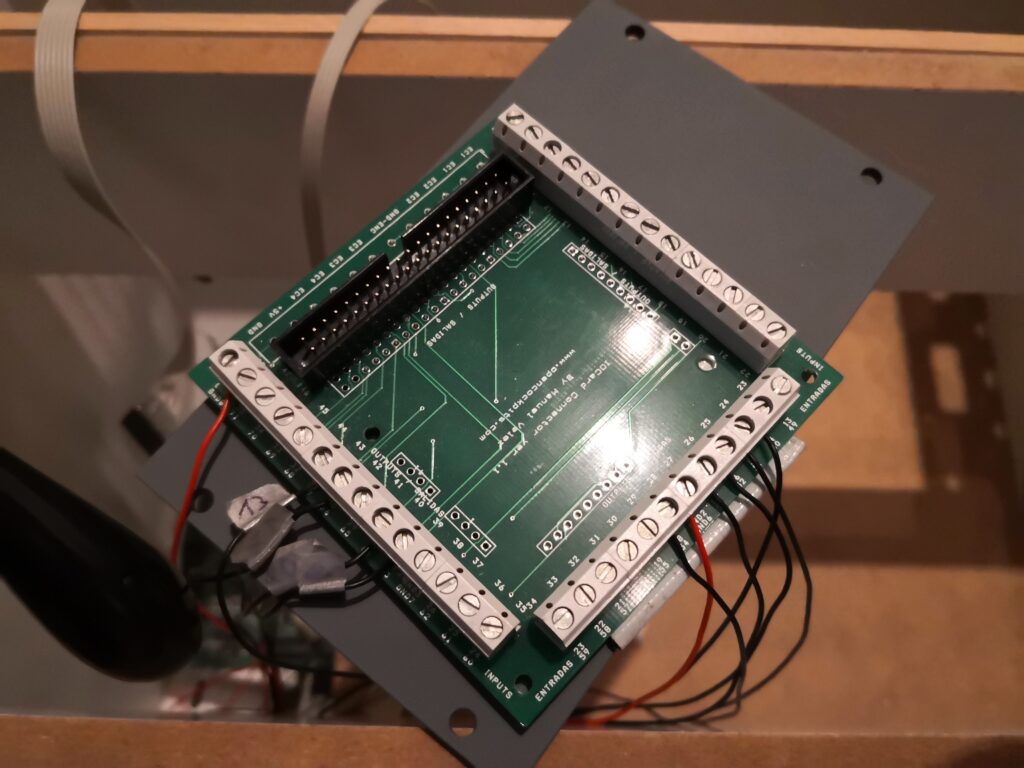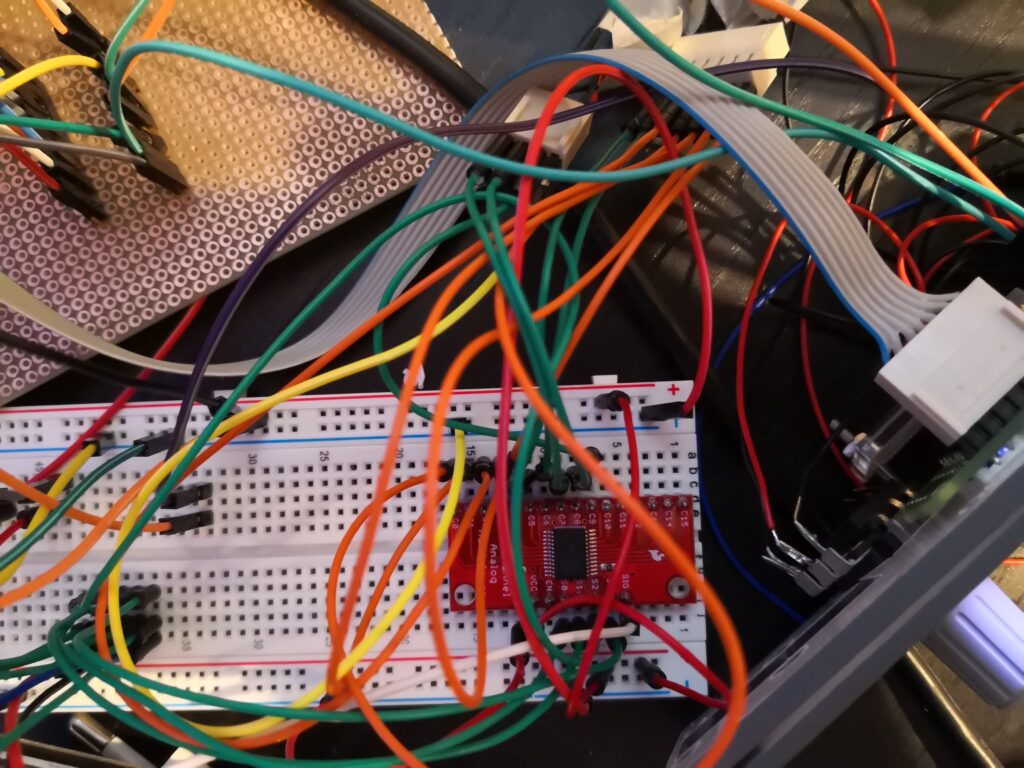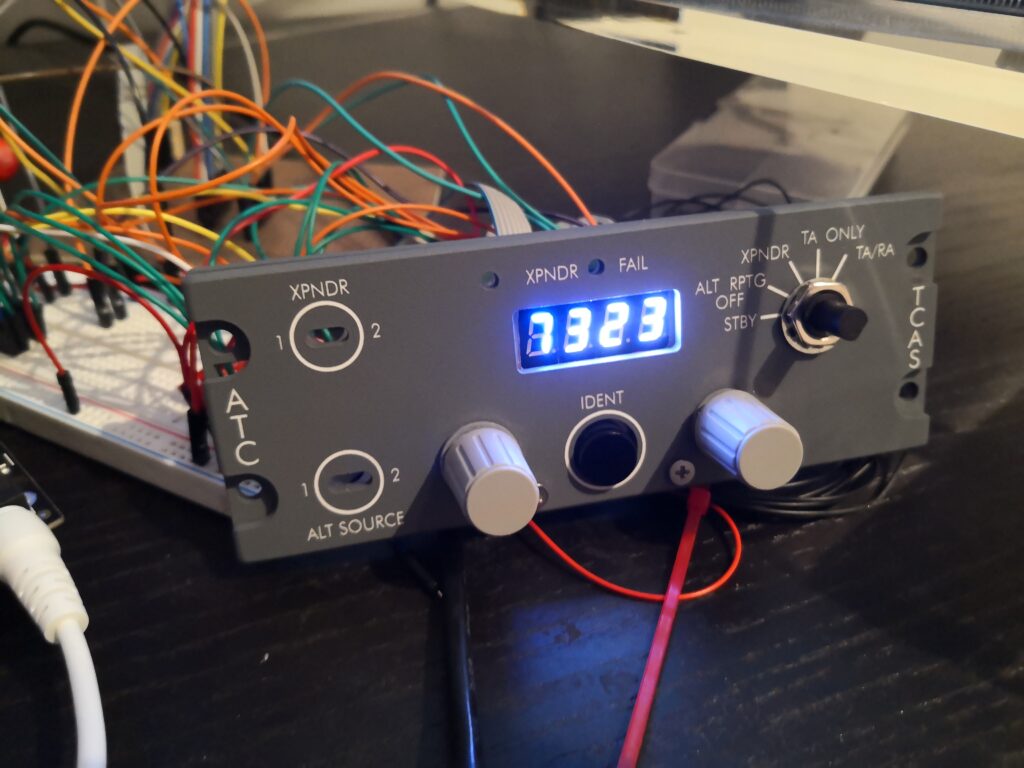So after testing the Max7219 drivers and getting all desired digits to work, I gave Inputs a try. So the goal was to “migrate” my already working OpenCockpits instruments to SimVim.
In order to reach that goal, the easiest would have been to make OC’s Inputs card somehow compatible with SimVim, meaning I’d just need to find a way, of connecting the multiplexer cards. Well – it turned out, that the pin positions don’t correspond with the actual “Input” pin. In fact, they seem to be completely random (I guess they are not, but I didn’t really bother yet to dig deeper).

So instead I disconnected the wires of my transponder from the Screw Terminal crimped them and put a connector on them to try it out.
For the transponder we are talking about the following components, which needed to be connected and configured:
- 1 Momentary Push botton (used for IDENT)
- 2 rotary Encoders (used for outer and inner Squawk)
- 1 Rotary switch (Used for modes)
After hooking them all up to the breadboard I gave SimVim’s configurator a go, created the config, fired up X-Plane AAAAANDDD it worked. At least thats what I though initially. The rotary switch – well – switched through the modes. But when hitting ‘TA/RA’ (which was configured to be on ‘C5’ of the multiplexer Board, SimVim got input from IDT, which was configured on channel 9. I checked and double checked the wires an connectors, but only the ones from the instrument to the multiplexer board. It turned out,did a mistake hooking up the address lines to the multiplexer board, resulting in mixed up addresses. So, instead of address 0101, Arduino got 1001. In the end I decided to redo the wireing completely and the problem was solved (to be honest, I really need to improve my cable management).

After I had my SimVim config done and everything looked good that far, I also connected the 4 digits I previously used with the transponder to the prototyping PCB. Last time I soldered one Max7219 driver to a blank PCB, added some male pin header and starter connecting Segments and digits. As you could see in my previous post, I already had the segments working that far. I added them to the config and hey – I got my transponder working again!

Since this is just a prove of concept, I’m looking forward to redoing all cables, connectors, etc. in a nice, clean way.